The History Of SAAB 900
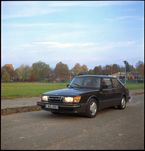
The 900 is a car that was made by Saab Automobile from 1978 until 1998 in two generations. The first generation from 1978 to 1993 is known as the "classic"; the generation from 1994 to 1998 is known as the "new generation" (see below).
The "classic" 900 is based on the Saab 99 chassis, though with a longer front end to meet U.S. frontal crash regulations. The 900 was produced in 2- and 4-door sedan, and 3- and 5-door hatchback configurations; additionally, from 1986, a cabriolet (convertible) model was produced. There were single- and twin-carburetor, fuel-injection and turbocharged engines, including both Full Pressure Turbo (FPT), and in European models during the early 90s, Low Pressure Turbos (LPT).
The Saab 900 was a front-engined, front-wheel-drive compact car with a longitudinally-mounted, 45-degree slanted, inline 4-cylinder engine, double wishbone front suspension and beam-axle rear suspension. In its heyday, the 900 was popular with drivers who enjoyed its comfort, safety, practicality (especially hatchbacks), and highway driving manners.
Like its predecessor the 99, the 900 contained a number of unusual design features that distinguish it from most other cars. Firstly, the engine was installed 'backwards', with power delivered from the crank at the front of the car. Secondly, the transmission, technically a transaxle, bolted directly to the bottom of the engine to form the oil pan (albeit with separate oil lubrication). Power from the crank would thus be delivered out of the engine at the front, then transferred down and back to the transmission below, via a set of chain-driven primary gears. Similarly, Minis also had their gearbox mounted directly below the engine; however, the Mini gearbox and engine shared the same oil, whereas the Saab 900 (and 99) gearboxes contained a separate sump for engine oil.
Very few front-wheel drive cars used a longitudinally-mounted engine configuration. Fewer still used a double wishbone suspension design. Refined over several decades of two-digit Saab models, the 900's double wishbone design provided excellent handling and road feel. The rear suspension comprised a typical beam axle design, stabilized with a Panhard rod. However, the attachment points between the axle and chassis made up an unusual configuration that essentially consists of two Watt's linkages at either end of the axle: a lower control arm attaches the axle to the bottom of the vehicle, while an upper link attaches at the top but faces towards the rear, unlike a typical 4-link design with both lower and upper links facing forward.
Early models did not have sway bars; they began appearing on certain models in 1985 and in U.S. and possibly other markets, became standard on all trim levels by the late 1980s. The sway bars decreased body roll, but at the expense of some ride comfort and when driven aggressively, increased inside wheelspin. The front and rear bars' diameters were unchanged throughout the model's run.
Stylistically, the 900 utilized a deeply curved front windshield for the best driver visibility, calling attention to the marque's aircraft legacy. The hatchback, or Combi Coupé cars were exceptionally spacious, if not universally loved for their aesthetics. Also underscoring their aircraft lineage, the 900's dashboard was curved to enable easy reach of all controls and featured gauges lit up from the front. Saab engineers placed all controls and gauges in the dashboard according to their frequency of use and/ or importance so that the driver need divert his gaze from the road for the shortest possible time and by the smallest angle. This is why, for example, the oft-used radio is placed so high in the dashboard.
The 900 underwent minor cosmetic design changes for 1987, including restyled front-end and bumpers that went from a vertical to a more sloped design; sheetmetal body parts were unchanged. Being a small car factory, for economic reasons, Saab kept the basic undercarriage more or less unchanged throughout the 900's production run.
The Saab 900 could be ordered with different options. One highly sought-after option was called the Aero or Sports Package (SPG), (or as it was known in the U.S. Special Performance Group) The Aero/ SPG incorporated (depending on the market and model year) a body skirt; a sport-suspension (1987+) that included shorter, stiffer springs, stiffer shocks, and swaybars; leather seats; premium stereo, and air conditioning. Each of these features could, of course, be ordered independently from Saab's Accessories Catalog for fitment to standard models. Power output varied by model year and market but 900S and 900 Turbo models produced after 1985 were fitted with a 16-valve engine (Turbo of course receiving a turbocharger), while the basic 900 kept the earlier 8-valve engine.
A 1989 Saab 900 SPG owned by Peter Gilbert of Wisconsin, was driven over a million miles, before being donated to The Wisconsin Automotive Museum. Peter Gilbert claimed a million miles out of the turbocharging unit in addition to the engine itself. He was awarded by Saab with a Saab 9-5 Aero.
The 1979 900 was available in three versions: The GL had the single-carb 99hp/ 73.5kW engine, the GLS had twin carburetors for 106hp/ 79.5kW, the EMS and GLE had fuel injection for 116hp/ 87kW, and the 900 Turbo produced 143hp/ 107kW. A five-speed transmission was introduced in the EMS and Turbo for 1980.
The 900 sedan was introduced in 1981 along with the phase-out of the old Saab B engine in favor of the lighter Saab H engine. In the early 1980s, most 900s were produced in Trollhättan. However, coinciding with the production of the 9000, more 900's were produced elsewhere. The Valmet plant in Finland, referenced below under the 900C, also produced the non-convertible as evidenced by one previously owned by this author and imported by the SAAB US distributor. The plant in Arlöv (now closed), near Malmö, also produced some 900s.
A big change for 1982 was the introduction of Saab's Automatic Performance Control (APC), a.k.a. boost controller. The APC employed a knock sensor, allowing the engine to use different grades of gasoline without engine damage. Another new feature that year was the introduction of central locking doors (on the GLE and Turbo). Asbestos-free brakes were introduced in 1983, an industry first. A new model also appeared that year in Sweden — the GLi, which used the fuel injected engine.
1984 saw the introduction of the 16-valve DOHC B202 engine. With a turbocharger and intercooler, it could produce 175hp/ 129kW in the Turbo 16 model (less for catalyst-equipped engines). The Turbo 16 Aero [designated SPG, Special Performance Group) in North American Markets] had a body kit allowing the car to reach 210km/ h (130mph). A different grille and 3-spoke steering wheel appeared across all models.
The dual-carb model (and "GL" nomenclature) was gone for 1985. Now, the base 900 had the single-carburetor engine, while the 900i added fuel injection. Two turbocharged models were offered: The 900 Turbo had the 8-valve engine, while the T16S had the 16-valve intercooled unit. The 8-valve turbo had the intercooler the next year, while the 16-valve cars had hydraulic engine mounts. 1986 also marked the introduction of the 900 convertible in North America.
A new grille, headlights, and so-called "integrated" bumpers freshened the 900's look for 1987, though the sheet metal was unchanged. Several common parts for the 900 and 9000 were introduced for 1988 model year, including brakes and wheel hubs. A water and oil cooled turbocharger (replacing the older oil-cooled unit) was also introduced to improve the unit's durability.
In each of the seasons 1987 and 1988, there was a special 'one-make' race series, in the UK, called the Saab Turbo Mobil Challenge, sponsored by Saab Great Britain and Mobil. It was run by the BARC.
The 8-valve engines were phased out in 1989 and 1990, with the turbo versions having been removed in North American markets by the end of 1984; North American 900S models received the non-turbo 16-valve engine for 1986. A non-turbo 16-valve engine replaced the 8-valve FI unit in the 900i (900S in North America) as well, while the carbureted engines were dropped. Larger pinion bearings were fitted to manual gearboxes for 1989 to improve their strength and reliability. A low pressure turbo engine was available in European markets in 1990 as well. Anti-lock brakes were introduced in 1990, and were standard on Turbo models and - along with a driver's side airbag - were standardized for all North American market cars.
A 2.1L (2119cc/ 129in³) (B212) engine was introduced in 1991. This engine was available in the United States until the end of the original 900, but in most of Europe, this engine was replaced a year later with the earlier B202 because of tax regulations in some European countries for engines with a displacement of more than 2000cc.
By 1990, the Saab 900 no longer offered the mesh wheels. There was also a change in the door locks, which carried over to the 900NG.
Front seats from the 9000 were standard from 1991 on and electronically-adjustable ones were available as an option.
"Classic" 900 production ended on September 26, 1993, with a new Opel Vectra-based 900 entering production shortly afterwards. The final classic convertibles were still sold as 1994 models, with the Special Edition commanding top dollar in the resale market even today.
In all, 908,817 Saab 900s were built, including 48,888 convertibles.
Nearly all special edition Saab are collectable. Being such a low volume manufacturer - any Saab limited edition model is considered a rarity. In terms of collector interest and investment viability, the 900 SPG (a high-performance version of the 1985-1991 Saab 900 Turbo 3-door typically equipped with leather interiors, aerodynamic side panels, and upgraded suspension components) is one of the most desired of the 900 series. The 1991 Beryl Green SPG, of which only 109 were made worldwide is considered to be the most rare - and in fact has for many enthusiasts never been seen except in pictures. The 1990 and 1991 Talledega Red SPG is also quite the item of interest for collectors. While several hundred Talledegas were made in 1990, only 40 were imported into the US in 1991. Lastly only four of the pearl white prototypes are known to exist in the US. One was destroyed and crushed for metal salvage in the late 1990s. One, in Rhode Island, has been heavily modified - but restored. One, on the west coast was never registered and is reputed to have less than 25,000 miles on the odometer. It does however have a replacement engine. The last is said to have been well kept in its original condition and is somewhere in Upstate New York and was used as a daily driver during summer months.
As for convertibles, the initial run of (300) 1986 convertibles, the (288) black 1998 Springtime in Sweden Model and the (300) Monte Carlo Yellow and (300) Platana Gray 1991 Special Edition Models and (500) 1994 Commemorative Edition convertibles are most coveted.
Also, in 1985 and 1986, Saab imported a 2-door notchback and in 1993 they produced a series of 325 (314 were actually produced according to the Saab Museum) Saab 900 Commemorative Edition 3-door Turbos - the quintessential Saab.
In the mid 1980s, the president of Saab-Scania of America, Robert J. Sinclair, suggested a convertible version to increase sales. The first prototype was built by ASC, American Sunroof Company (now American Specialty Cars). Similarly, Lynx Motors International Ltd produced two "convertible" models, just prior to the official 1986 launch.
The Trollhättan design department, headed by Björn Envall, based its version on the 3-door hatchback while the Finnish plant used the sturdier 2-door version, which also looked better and was therefore selected for production. The initial production was not planned to be large but the orders kept coming in and a classic was born.
The new car was shown for the first time at the Internationale Automobil-Ausstellung (IAA) in Frankfurt in the autumn of 1983. The first prototype aroused enormous interest and in April 1984, Saab decided to put the car in production at Valmet. The production of the first 900 convertible started during the spring of 1986.
The convertible usually had a 16-valve turbocharged engine, some with intercooler, but it was also offered in certain markets with a fuel-injected 2.1L naturally-aspirated engine from 1991 on.
Influenced by General Motors (GM), in 1994 the "New Generation" (NG) 900 SE, based on the Opel Vectra chassis, was introduced. While this design contained styling cues reminiscent of the classic 900, the GM 900 was fundamentally a different car. For many fans of the marque, the GM 900 marked the end of Saab's technology-driven design philosophy and, in their view, the beginning of the dilution of the SAAB brand.
The cabriolet/ convertible, however, was made on the 'classic' chassis for an additional year. This model is affectionately known as "The Goose", as, in some markets, the emblem on the back of the SE version reads "Saab 900 SE", which looks a bit like "GOOSE."
In US and Canadian markets, commemorative versions were produced for 1994 featuring special charcoal metallic "Nova Black" paint, a wood dash, black leather piping on the seats and higher-performing engines.
Saab introduced a turbocharger in 1978 in its 99 Turbo with the B engine (based on the Triumph Slant-4 engine designed for Saab by Triumph). This engine was also used in early 900 Turbo models, which in export markets made Saab a household brand.
The B-engine was further designed into the H engine, which was used through 1993 (and 1994 cabriolets). The H-engine is very durable, and due to a fairly standardized engine management system, can be easily tuned to 197hp/ 147kW, and with further bolt-on modifications, to the 247hp/ 184kW range. Saab used Bosch-made mechanical K-Jetronic continuous fuel injection in the fuel injected and 8-valve turbocharged versions, and the Bosch LH 2.2 and 2.4 and Lucas Automotive electronic fuel injection systems were used in the 16-valve versions. The 2.1L I4 16-valve engine used the Bosch LH 2.4.2 electronic fuel injection system.
What set the 900 Turbo apart from its turbo-equipped competitors, especially in the early- and mid-1980s, was the development and use of the Automatic Performance Control (APC) boost controller. The system allowed the engine to run at the limits of engine knocking. The system had a knock sensor attached to the motor block and if knocking of any kind was present, the APC-system would decrease the charge pressure by opening a wastegate, a bypass to the exhaust. This enabled the use of various octane fuels and also made the use of the turbocharger safer for the engine. Later 900 Aeros and Carlssons had special APC controllers in red enclosures (so-called "redbox" APCs) that provided more boost and increased power to 175hp.
At first, Saab used a Garrett Systems turbocharger (T3), which was oil-cooled. From 1988 through 1990, watercooled T3s were fitted. In 1990, Saab fitted Mitsubishi TE-05 turbochargers in the SPG models only; in 1991, all 900 Turbos were fitted with the TE-05. Also watercooled, the TE-05 was slightly smaller than the Garrett T3s, providing improved throttle response and quicker spool-up. The TE-05 is unique in that its exhaust inlet flange utilizes a Garrett T3 pattern.
Engines:
- 1979–1989 — 2.0L (1985cc) B201 NA, single-carb, 99hp (74kW; 100PS) at 5200rpm and 163N·m (120lb·ft)
- 1979–1984 — 2.0L (1985cc) B201 NA, dual-carb, 106hp (79kW; 107PS) at 5200rpm and 165N·m (122lb·ft)
- 1979–1989 — 2.0L (1985cc) B201 NA, FI, 116hp (87kW; 118PS) at 5500rpm and 168N·m (124lb·ft) at 3700rpm
- 1979–1985 — 2.0L (1985cc) B201 Turbo, 143hp (107kW; 145PS) at 5000rpm and 235N·m (173lb·ft)
- 1986–1989 — 2.0L (1985cc) B201 Intercooled turbo, 138hp (103kW; 140PS)-155hp (116kW; 157PS) at 5000rpm and 235N·m (173lb·ft)
- 1984–1993 — 2.0L (1985cc) B202 16-valve turbo, 160hp (120kW; 160PS)-175hp (130kW; 177PS) at 5500rpm and 255N·m (188lb·ft)-273N·m (201lb·ft)
- 1989–1993 — 2.0L (1985cc) B202 16-valve, NA, 124hp (92kW; 126PS)-128hp (95kW; 130PS) at 6100rpm and 170N·m (130lb·ft)-177N·m (131lb·ft)
- 1990–1993 — 2.0L (1985cc) B202 16-valve low pressure turbo (LPT), 143hp (107kW; 145PS) at 5600rpm and 202N·m (149lb·ft)
- –1994 — 2.0L (1985cc) B202 16-valve intercooled turbo (FPT) in the convertible.
- 1991–1993 — 2.1L (2119cc) B212 NA, FI, 138hp (103kW; 140PS) at 6000rpm and 180N·m (130lb·ft)
900 GLi Gold
The Gold special edition was available in the UK in 1981 as the first 900 4 door Saloons, these had Turbo Spec Velour Interior finished in either Blue or Black with Gold pin stripes, twin air vent bonnet and fuel gauge showing tank contents in Litres.
900 Tjugofem
The tjugofem (= 25 in the Swedish language)) Saloon was released in a batch of 300 to celebrate SAABs 25th year in the UK. These had the 1985cc 8-Valve engine with Bosch K-Jetronic fuel injection. Interior trim was blue turbo velour with a special gear knob with the cars number. Exterior the model was a standard non-turbo apart from alloy wheels, Tjugofem pinstriping and Turbo style rear spoiler.
900C
900C was built in Uusikaupunki, Finland and in Arlöv, Sweden just outside Malmö, was a late 1980s carburetted model. It used an eight-valve B201 engine with a single carburetor producing 100 BHP.
900 Aero or 900 SPG
In 1984, Saab introduced a high performance model known in Europe as the Aero. In North America, the model designation became SPG (Special Performance Group) due to a model and trademark conflict with GM. The Aero/ SPG was the first Saab to be delivered with the 160bhp 16-valve turbo motor. The concept Aero/ SPG vehicles were met with huge acceptance by the motoring community. These prototypes were painted a striking Mother of Pearl White and had red leather interiors with matching red dashboards. Unfortunately, in testing, the pearlescent white was found to be too difficult to repair in terms of color match - and the color was never offered to the public for sale. Only a handful of these prototype Aero/ SPGs were manufactured and are considered quite rare by collector standards. In 1985, the first year of consumer production, the Aero/ SPG was delivered in black-painted livery. In the US the cars were featured with tan leather interiors. In Canada and in the rest of the world, the cars were black with red leather interiors. 1985 was the only year of the Aero/ SPG when a color other than dark grey was available on the SPG in North America. Production of the SPG was extremely limited and paint color availability varied by year. The final year of production was 1991. In total - over the course of six years, just over 7,000 SPGs were built and imported to North America. In the rest of the word, Aeros were equally rare - especially those loaded with leather interiors, A/ C and other luxuries considered standard by upscale North American consumers. The SPG is fondly regarded by car collectors and Saab enthusiasts.
900EP
The EP was a special Ecopower model for the Italian market. It uses a 16 valve low pressure turbo (LPT) engine and has a pre-heated catalytic converter.
900 CD
In 1977 Valmet had created an elongated executive model of the 99 combi-coupé named "Finlandia". With the introduction of the 900, the concept was transferred onto the new chassis. The "Finlandia" was 20cm (7.9in) longer than standard, by adding 10cm (3.9in) to both front and rear doors, but only the rear leg room was larger. The idea behind the car was to produce an executive car which would appeal to the Nordic market as an option to big German and American sedans. The first cars were sold as the Saab 900 "Finlandia". These cars made between 1979 and 1982 were combi-coupés, and didn't have the 'CD' designation. Very few examples of these early models were exported. After the more representable 4 door sedan was introduced, the CD designation replaced the nickname and the Swedish Saab headquarters started to officially offer the car for export. The 900 CD was made at the Valmet factory in Uusikaupunki, Finland. At least in the domestic market the cars were essentially built to the buyers wishes. The list of optional extras for the CD included a leather interior, reading lights, rear blinds, footrests, and even an in-car telephone. However, due to the cars special nature and demanding customer base, the trim and technical specifications of some examples can be unique. The Uusikaupunki factory clearly had high aspirations for the car. Valmet even developed a prototype of an even longer, seven seat limousine as a concept car of an official state car.
900 Springtime in Sweden [SIS]
In 1988, Saab commissioned 288 special convertibles as gifts to it US dealers. Dubbed the Springtime in Sweden, or "SiS" model these cars are differentiated by their color scheme and Aero/ SPG-like bodywork and 3-spoke wheels. Each car was painted black, with buffalo grey leather interiors and black convertible roofs. Each car was marked with a special "Springtime in Sweden" emblem that was attached to the lower left of the glovebox door. All were Turbo models. Of the 288 built, four were automatics and the remaining 284 had 5-speed manual transmissions. Emblems on the exterior body were deleted in the scheme of the SPG, with only the word SAAB and the Saab-Scania roundel on the trunk appearing on the car. The car was fitted with the standard Saab grille for the period. In addition to the car, each dealer also received an Orrefors crystal vase, engraved with the Saab-Scania logo, packed in the trunk when they were delivered stateside as a surprise additional gift.
900 Enduro
The Enduro was a special version of the 900 Turbo assembled by Saab Australia; only twelve 900 Enduros were made . Five are believed to still be in existence as of December 2008.
The package consisted of large, flared fiberglass fenders, front and rear fiberglass spoilers, extra gauges (oil pressure [0 to 500kPa - 0 to 75 psi], battery voltage [10 to 16 volts] and ammeter [-50 to +50 A]) mounted where the radio usually was.
The cars were fitted with Simmons 'P-4' 3-piece composite alloy 7.5x15" wheels. The overall outside edge-to-edge distance is 4 inch wider at the front and 9 inches at the rear over a 900 Turbo of the day - mainly to fill the enormous guards. Tyres were 225/ 50VR15 Pirelli Cinturato both front and rear.
Suspension was improved with 290mm (free length) by 17mm 368lb 7.1 turn springs up front and 300mm (free length) by 16mm 484lb 9 turn springs at the rear. Steering caster was set to +2.25 deg +/ - .25 deg, camber to -1.75 deg +/ - .25 deg and toe in was 2.5mm +/ - 0.5mm.
To increase performance, the wastegate was set at 17 psi (1.2 bar) which delivered a claimed 175hp from its 8-valve B201 slant-4 engine. Water injection came standard.
Paint was a 2-pack Dulux Acran enamel and came in at least two known colors - a metallic royal blue, and a very light green (almost white) referred to as "Marble White". The hood, side window frames and rear deck were painted in Dulux GT Satin Black. Large "ENDURO" stripes were emblazoned on the hood, the rear deck and along both sides at sill level.
900 Lux
The Lux was a special model available 1983 and 1984. It came in a two-tone paint, usually Slate Blue metallic on top and silver below.
900 SE
The SE model was produced in May 1990 and came with 5 doors Irridium Blue with blue-pin stripes down the sides. The car also featured multi-spoke alloys, full electrics, grey leather seats and wood effect as standard. Only 300 were originally made for the UK market, with a choice of either a 2.0L N/ A engine or 2.0L lpt version. For further reference to 900 special models read "Saab 99 and 900: The complete story". Later more SE version were made; however these were not part of the original limited run.
900 Carlsson
The Carlsson was a special edition 900 made in honour of Erik Carlsson, of which only 600 examples were made in the 3 years it was in production (1990 to 1992). It is thought by most that there were only 200 examples made but in fact there were 200 examples made for each of those 3 years. So it would be more likely that there are 200 examples of each of the 3 colours, which were, Black, White and Red. All 900 Carlssons were 3 door hatchbacks, had a body coloured AirFlow body kit, were fitted with twin chrome exhausts, and were powered by the 1985 cc turbocharged engine with an upgraded (Red) APC giving 185 BHP.
900 Ruby
Only available in the UK, the Ruby had the 185bhp 'Carlsson' engine but no body kit. All were in 'Ruby' Red and can be distinguished from other 900's by the colour coded bumpers. They also had the unique half leather, half grey zegna wool seating. There were 150 examples and were the last classic style 900's sold in the UK.
Conversions
- Lynx Engineering produced two "convertible" models, just prior to the official 1986 launch.
- A demountable camper module, the Toppola, was created for the 3/ 5-door hatchback.
- Coachbuilder Nilsson built a variant Saab never thought of - a wagon, the styling of which was incredibly well executed.
- Limousine conversions are few, but effective.
Dealer Models
Some SAAB dealers made special models. SAAB Wimbledon made the Sprint and the Sport. The Sprint had a special body kit, lower, stiffer springs, and Pirelli P7 on 7"x16" wheels. It also came with an intercooler, full colour coding and 3-spoke leather steering wheel. The Sport had alloy wheels, full colour coding and spoilers, uprated suspension, 3-spoke leather steering wheel, Clarion stereo and an electric aerial. Heuschmid GmbH offered options such as tuning, intercooler, suspensions tweaking and custom alloy wheels. EIA Motors of France made a series of 100 normally aspired 16 valve tuned to 158 BHP. Lynx Motors in the UK made a short run conversion of the two-door 900 shell to a convertible.
- Front track: 1420mm (55.9in)
- Rear track: 1430mm (56.3in)
- Ground clearance: 150mm (5.9in)
- Weight distribution: 60/ 40 (unloaded), 51/ 49 (fully loaded)
The tire supplier varies by market and model year. In 1982, the US market was supplied with Pirelli P6 (not to be confused with the current P6 4 Season) 195/ 60HR15 tires for the 900turbo and Pirelli P8 185/ 65SR15 for the 900 (called the 900GLi in some markets) and 900S (called the 900EMS in some markets). Aero and SPG models, as well as vehicles that were delivered from the factory equipped with red-box APC systems were shod with 195/ 60VR-15 tires. In 1990, the US market 900 (called the 900i in some other markets) was supplied with Pirelli P8. In 1992, there were several tire suppliers and at least one US market brochure stated that the US distributor cannot allocate cars by tire manufacturer.
The second-generation Saab 900 (also referred to as the GM900 or NG900 among enthusiasts) is a compact executive car which was produced by Saab Automobile from 1994 until 1998, when it was replaced by the Saab 9-3 (in most markets; in 1999 in the USA). Based on GM's Opel Vectra platform, the NG900 was a replacement for the "classic" first-generation Saab 900. Although it bore a family resemblance to its predecessor, the NG900 was an entirely new model.
Variants
Variants included S (4-cylinder, non-turbo) and SE (4-cylinder turbo or V6) models in three-door, five-door and convertible body styles. For 1997 and 1998 only, there was also a special edition 'Talladega' model, after a record-breaking endurance test in 1996, on the Talladega racetrack.
Depending on market, the NG900 was available with a choice of 2.0L or 2.3L Saab 16-valve DOHC engines (Saab engine codes B204, B234) in naturally aspirated or turbocharged form (2.0L only), as well as a 2.5L version of GM's European 54° V6 engine. Engine management for the turbos was by Saab Trionic 5 with Direct Ignition (SDI) and Automatic Performance Control, and for non-turbos by Bosch motronic fuel injection. A distributor-operated ignition system was provided for naturally-aspirated engines in some markets.
In contrast to the 'classic' Saab 900 with its longitudinally-mounted engine and front-hinged hood (bonnet), the NG900 had a more-common transversely-mounted engine with rear-hinged hood (bonnet).
In 1998 marketing materials for the successor Saab 9-3, Saab claimed over "1,100 improvements" had been made, although the new model was virtually indistinguishable to casual observers from the older model. In many markets the 1998 models were sold as 9-3's, though in the US, the 9-3 name was introduced in model year 1999.
Sensonic
The 'Sensonic' clutch variant, (available on the Turbo models only) provided a manual gear lever as in a standard manual transmission car, but omitted the clutch pedal in favor of electronics which could control the clutch faster than the average driver.
When a driver started to move the gear shift knob/ gear selector lever, a computer-controlled actuator operated the clutch. With the car in gear but stationary, the clutch was released only when gas was applied. If neither brake nor gas pedal was depressed, a warning tone sounded and a message flashed on the on-board display, and if no action was taken after 7 seconds, the engine was shut off.
Sensonic was discontinued after a short time, as it proved to be somewhat unreliable and expensive to repair.
The SAAB 900 handbook has an error, where it states that if the car is in gear and starts rolling backwards down a hill, the clutch will operate to stop it rolling back. This "Hill Start" mode was not actually implemented on the car.
Saab Information Display
The Saab 900 NG introduced the Saab Information Display, or SID, which gave the driver potentially useful realtime information while driving, such as fuel efficiency and outside temperature. SIDs were later put into all Saab models.
Engines
- 2.0L B204L 16-valve turbo intercooled, 185hp (136kW)
- 2.0L B204I normally-aspirated 16-valve four cylinder, 130hp
- 2.0L B206I normally-aspirated 16-valve four cylinder with no balance shafts, 133hp
- 2.3L B234I normally-aspirated 16-valve four cylinder, 150hp
- 2.5L B258I 54° V6, 24-valve, 170hp DIN (125kW)
Black Panel
One Saab innovation, inspired by the company's roots in aeronautics, was the 'Black Panel' (later 'Night Panel') feature, which allowed most instrument panel lights to be extinguished at night at the touch of a button, creating less distraction during night driving. While active, other instruments were allowed to illuminate themselves when driver attention was required. This feature was carried over (renamed 'Night Panel') into Saab 9-3 and Saab 9-5 models.
1998
- Best in Class, cars $25,000-$35,000 (900 S Turbo) - Kiplinger's Personal Finance, USA
1996
- Among Top Ten Sports Cars - Consumer's Review, USA
- IBCAM British Steel Auto Design Award (Saab 900 2.0i Coupé) - The Institute of British Carriage and Automobile Manufacturers, Great Britain
- Best Buy - Consumers' Digest, USA
- New world-records for endurance, at Talladega, USA
1995
- Top Car in its Price Class (Saab 900 SEV6) - American Automobile Association (AAA)
- Best Buy - Consumers' Digest, USA
- Among Top Ten Sports Cars - Consumer's Review, USA
- Technology Award 1995 for Saab Sensonic - Autocar, Great Britain
1993 and 1994
- Top Choice in annual Car of the Year reader poll - Autoweek Magazine, USA
- Annual Special Prize To Saab Safeseat - Motoring Journalists' Club, Denmark
- One of the Ten Most Improved Cars And Trucks of 1994 - Syndicated automotive experts Mike Anson and Steven Parker, USA
- Import Car of the Year 1993/ 94 in Japan - RJC (Automotive Researchers and Journalists Conference of Japan), Japan
- Best Buy - Consumers' Digest, USA
- Excellent Swedish Design 1994 - The Swedish Society of Crafts and Design, Sweden
- Family Car of the Year (900S) - Motoring '94, Canada
- Scandinavian Design Prize 1994 - The Scandinavian Design Council (The Nordic Design Centres)
- Executive Car of the Year 1994 - Portuguese Car Trophy
- 1993 Best Buy - Consumers' Digest, USA
- 1994 Design of the Year - Automobile magazine, USA
- Best New Car - Kiplinger's Personal Finance Magazine, USA
- Car of the Year 1993 - Moottori magazine, Finland
- Best of What's New - Popular Science, USA
- 2nd Most Popular Car - STATUS magazine, Germany
- 1994 Technology of the Year (for Saab Trionic) - Automobile magazine, USA
From Wikipedia, the free encyclopedia
More About SAAB 900
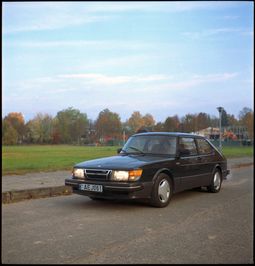
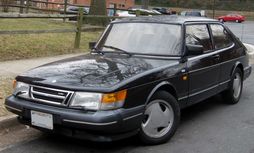
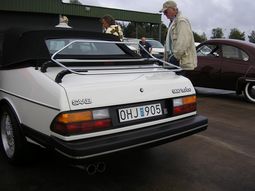
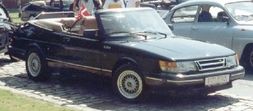
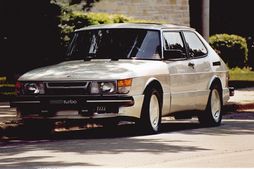
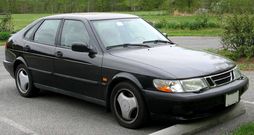
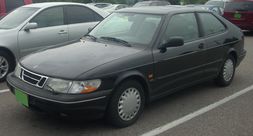
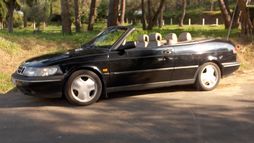
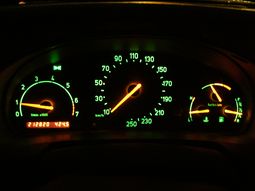
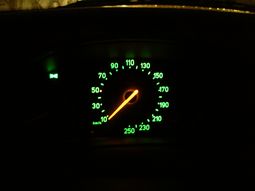
|